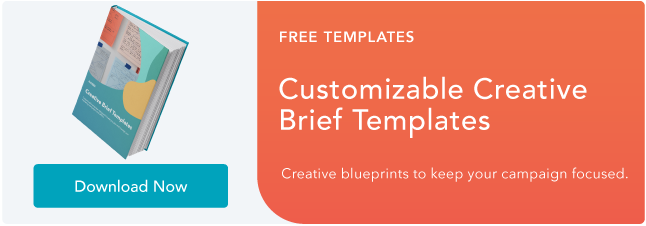
Making a U-turn in a Ford Focus is easier than in an 18-wheeler.
In the same sense, making substantial changes to your company structure is much easier at an agency of 10 people than an agency that has grown to 50 or more.
But that challenge and discomfort shouldn't keep you from working to improve your agency's structure. If you approach the process strategically and for the right reasons, change can be a positive force for your company -- and it could potentially result in pretty impressive growth in the long run.
When my content marketing agency, Influence & Co., grew to about 50 people a year and a half ago, we decided to change our entire company structure.
When I discuss this change with my fellow agency leaders, they often think (at least initially) that a switch to a client-based team structure instead of siloed departments would be chaotic, difficult, and possibly negative for clients who were used to and preferred the existing model.
But change -- even major structural and procedural change -- doesn't have to create chaos. If you and your leadership team manage development effectively and commit to transparent communication with your team and clients, you might be surprised by how smooth the process can be.
If you're considering making a change within your own agency's team structure, take a look at whether an approach like ours would work for you.
Why We Saw Change on the Horizon
In our agency's infancy, our client services team was divided into departments by role. Our account strategists managed sets of clients from their own department, while editors, in a separate department, worked on content for all clients according to their individual capacities.
This is a fairly common structure for content agencies, but its prevalence doesn't mean it's perfect. In fact, we found it was responsible for a number of inefficiencies and incidents of tension between departments.
A lack of regular contact between editors and clients often left editors in the dark about concerns like strategy and tone, which resulted in a disconnect that reduced content quality. Account strategists were split between two very different job functions: account management and content strategy. This not only left them feeling stretched too thin, but also made it difficult for us to hire and train content marketers and project managers.
This problematic disconnect made it challenging for us to effectively service clients, and kept our employees from performing at their best. We knew we needed a change -- we just had to determine what it would look like.
How One Change Can Improve Everything
After six months of internal research and planning, we rolled out the client-based structure we use today.
Rather than separate departments, we designed smaller teams called "pods" that include three team members essential to an effective content strategy who collaborate to serve their assigned clients. Each pod contains an account strategist who manages client relationships, a content strategist who manages client campaigns, and an editor who manages content creation.
The pod structure completely broke down the silos that kept our client-facing team members from working together as efficiently as we knew they could. The new structure also included dividing the account strategist role into two positions, which allows the three pod members to specialize in their own areas of expertise. And because these team members are dedicated to working together and serving their shared group of clients, they each understand those clients, those clients’ strategies, and one another’s roles much more thoroughly.
Because of the targeted focus on client service and employee performance, this change has helped our company grow and improve by every metric we measure.
Our client lifetime has grown by 30%, client satisfaction -- as measured by Net Promoter Score -- improved by 29% three months after the change; employee satisfaction has risen by 23%; and our top-line revenue has grown by more than 50% since the switch.
Planning for growth has also become easier. In the past, the resignation of one account strategist meant we'd need to transfer all his clients to other account strategists right away. That back-and-forth transfer of clients weakened the client experience and added stress to other team members. Now if one person in a pod leaves, that client has two other familiar faces he or she can trust and continue working with while the third role is being filled.
Plus, the remaining pod members can temporarily pick up the slack while we transition a new employee into the vacant role, giving us enough time to properly hire and train another team member. The entire structure is a much more stable approach to growth and client management than any we had before.
Get the Team Involved for Effective Change Management
We did our best to roll out these structural and procedural changes -- big and small -- in a way that our team could embrace. What we didn't do was walk into the office one day and say, "Hey, everyone. All of your roles are changing. We're doing a pod thing now. Good luck!"
Conversations with team members began about six months before we actually shifted to a pod structure and about three months before our support-structure change. Beginning with discovery conversations with people in all affected roles, we asked how employees thought it would impact their jobs and what resources they needed to make the transition smooth.
We also asked our team to poke holes in each idea. What did they think wouldn't work about these changes? Were we overlooking something important? How could we make this even better?
With this information, we laid out a transition plan, communicated the changes to our team (including why we felt this plan was the right choice), and set aside an entire day to turn off client work and integrate into the new roles. And we haven't looked back since.
So whether you're behind the wheel of a Ford Focus or a semi-truck, change will be inevitable -- but there's no reason for it to drive you off the road. The major changes Influence & Co. has introduced over the past year and a half have resulted in amazing growth and improvement: Our clients are more satisfied, employees stay with us longer, and everyone reports feeling more supported.
Your agency is only as strong as your employees and their abilities to serve clients. Isn't it worth exploring the changes that might positively affect them?
from HubSpot Marketing Blog https://blog.hubspot.com/marketing/simple-change-employee-client-satisfaction

No comments:
Post a Comment